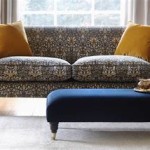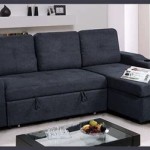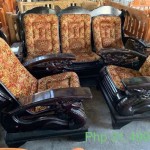Metal Sofa Legs Replacement: A Comprehensive Guide
Sofa legs, often overlooked, play a crucial role in the overall aesthetic and functional stability of a sofa. Damage, wear, or a simple desire for a style update can necessitate sofa leg replacement. Metal sofa legs offer a durable and often visually appealing alternative to wood or plastic, providing enhanced support and a modern aesthetic. This article provides a comprehensive guide to understanding metal sofa legs, recognizing the need for replacement, selecting appropriate replacements, and executing the replacement process effectively.
Understanding the Importance of Sofa Legs
Sofa legs are more than just decorative elements. They serve several essential functions. Firstly, they provide elevation, lifting the sofa off the floor. This elevation prevents moisture accumulation, which can lead to mold and mildew growth, particularly in humid environments. The raised height also facilitates easier cleaning beneath the sofa. Secondly, sofa legs distribute the weight of the sofa and its occupants evenly, preventing undue stress on the sofa frame. Proper weight distribution is crucial for the longevity and structural integrity of the sofa. Thirdly, the style and material of the legs significantly impact the overall aesthetic of the sofa, contributing to the room's overall design.
Metal sofa legs, specifically, offer distinct advantages. They are generally more durable than wood or plastic legs, capable of withstanding greater weight and resisting damage from impacts or friction. Metal legs often have a sleek, modern appearance that complements contemporary interior design styles. Furthermore, metal is less susceptible to pests like termites or woodworms, ensuring the long-term integrity of the sofa support.
Recognizing the Need for Metal Sofa Leg Replacement
Identifying the need for sofa leg replacement is crucial to prevent further damage to the sofa frame or potential safety hazards. Several indicators suggest that replacement may be necessary. Visible damage to the legs, such as bending, cracking, or rusting, is an obvious sign. Bent or unstable legs can compromise the sofa's stability, making it unsafe to use. Rust, especially in steel legs, can weaken the metal over time, leading to structural failure. Wobbling or unevenness of the sofa also indicates a potential problem with the legs. This could be due to a broken leg, loose connection, or uneven wear. If the sofa feels unstable or rocks excessively when sat upon, the legs should be inspected immediately.
Another reason for replacement is purely aesthetic. If the existing legs are outdated, damaged beyond repair, or simply no longer suit the desired décor, replacing them can be a cost-effective way to refresh the look of the sofa. Swapping out old, worn wooden legs for sleek, modern metal legs can dramatically change the sofa’s appearance and update the entire room’s style.
Finally, if the existing legs are not providing adequate support for the sofa's weight, replacement with sturdier metal legs may be necessary. This is particularly important for larger sofas or sofas that are frequently used by multiple people. Insufficient support can lead to sagging cushions and premature wear of the sofa frame.
Selecting Appropriate Metal Sofa Leg Replacements
Choosing the right metal sofa leg replacements involves considering several factors to ensure compatibility, functionality, and aesthetic appeal. The first consideration is size and height. The replacement legs should be the same height as the original legs, or slightly taller if desired. Altering the height significantly can affect the sofa's comfort and overall appearance. Measure the existing legs carefully to ensure a proper fit.
The mounting style of the legs is another critical factor. Most sofa legs attach using either screw-in bolts or mounting plates. Screw-in bolts are the most common type and are suitable for sofas with threaded inserts in the frame. Mounting plates provide a wider surface area for attachment and are often used for heavier sofas or sofas with less sturdy frames. Ensure that the replacement legs have a compatible mounting style with the existing sofa frame. If necessary, adapters or mounting plates can be purchased to accommodate different mounting styles.
Material and finish are also important considerations, both functionally and aesthetically. Steel is a common choice for metal sofa legs due to its strength, durability, and affordability. Stainless steel offers enhanced corrosion resistance and is ideal for humid environments. Aluminum is lighter than steel and offers good strength, but it may not be as durable for heavy loads. The finish of the legs should complement the sofa's upholstery and the overall room décor. Common finishes include chrome, brushed nickel, matte black, and gold. Powder-coated finishes offer enhanced durability and a wider range of color options.
Finally, consider the style of the legs. Metal sofa legs are available in a variety of styles, from minimalist designs to more ornate options. Choose a style that complements the sofa's design and the overall aesthetic of the room. Straight legs are a classic and versatile choice, while angled legs offer a more modern and dynamic look. Tapered legs provide a more refined and elegant appearance. Consider the overall shape and profile of the legs to ensure they harmonize with the sofa's design.
The Metal Sofa Leg Replacement Process: A Step-by-Step Guide
Replacing metal sofa legs is a relatively straightforward process that can be completed with basic tools and a little patience. The first step is to gather the necessary tools and materials. This includes the replacement sofa legs, a screwdriver or wrench (depending on the mounting style), a measuring tape, a level, and potentially a drill with appropriate drill bits if new mounting holes are required.
Next, prepare the sofa for leg replacement. Carefully turn the sofa upside down, ensuring that it is supported on a soft surface to prevent damage to the upholstery. Remove the existing sofa legs. If the legs are attached with screw-in bolts, simply unscrew them. If they are attached with mounting plates, unscrew the screws securing the plate to the sofa frame.
Inspect the sofa frame for any damage or loose connections. If the frame is damaged, repair it before attaching the new legs. If the frame is sturdy, proceed to attach the replacement legs. If the replacement legs use screw-in bolts, align the bolt with the threaded insert in the sofa frame and screw it in tightly. If the replacement legs use mounting plates, align the plate with the desired position on the sofa frame and mark the locations for the screw holes. Use a drill with an appropriate drill bit to create pilot holes for the screws. Attach the mounting plate to the sofa frame using screws.
Once all the legs are attached, carefully turn the sofa upright. Use a level to ensure that the sofa is level and stable. If any adjustments are needed, loosen the legs slightly and readjust their position until the sofa is level. Tighten the legs securely once the sofa is level. Finally, inspect the replaced legs to ensure they are securely attached and properly aligned.
Troubleshooting Common Issues During Metal Sofa Leg Replacement
While the metal sofa leg replacement process is generally straightforward, several common issues can arise. One common issue is difficulty removing the existing legs due to corrosion or stripped screws. If the screws are stripped, try using a rubber band or steel wool between the screwdriver and the screw head to provide better grip. If the legs are corroded, try applying penetrating oil to the threads and allowing it to soak for several hours before attempting to remove the legs.
Another common issue is misaligned mounting holes on the replacement legs. If the mounting holes do not align with the existing holes on the sofa frame, it may be necessary to drill new holes. Use a drill with an appropriate drill bit and ensure that the new holes are properly aligned. Be careful not to drill too deep, as this could damage the sofa frame.
A further issue is finding replacement legs that match the original height and style. Measure the original legs carefully before purchasing replacements. If an exact match is not available, choose legs that are as close as possible in height and style. Adapters or risers can be used to adjust the height of the legs if necessary.
Finally, if the sofa frame is weak or damaged, the new legs may not provide adequate support. In this case, it may be necessary to reinforce the frame before attaching the new legs. This can be done by adding additional support beams or using wood glue and clamps to repair any cracks or damage.
In conclusion, replacing metal sofa legs is a valuable way to improve the functionality, stability, and aesthetics of a sofa. Understanding the importance of sofa legs, recognizing the need for replacement, selecting appropriate replacements, and following the replacement process carefully can ensure a successful outcome. By addressing potential issues and troubleshooting common problems, individuals can effectively replace their metal sofa legs and enjoy a revitalized and more stable seating experience.

Furniture Legs 4pcs Metal Triangle Sofa Modern Replacement Feet Couch Dresser Table Cabinet Cupboard Heavy Duty For Coffee Desk Wardrobes Bookcase Com

Likem 4pcs Metal Sofa Legs Furniture Replacement Leg Golden Feet Heavy Duty Triangle Cabinet Black Com

Metal Furniture Legs Triangle Modern Sofa Set Of 4 Diy Table Replacement Heavy Duty Feet For Coffee Dresser Couch Black10cm Com

Modern Design Black Nickel Color Customized Metal Furniture Legs Replacement Sofa China Made In Com

1pc Metal Triangle Furniture Leg Cabinet Cupboard Sofa Couch Feet Replacement

4pack Furniture Sofa Legs Triangle Replacement Cupboard Metal Black Finished Table Cabinet Feet Diy Parts Com

Metal Replacement Sofa Legs Sofas Bed Furniture Chair Couch Table Feet Leg

Furniture Chrome Iron Metal Modern Sofa Leg Replacement Legs Feet China Made In Com

4pcs Furniture Legs Replacement Chair Desk Metal For Sofa Couch Bed Com

1 X Modern Furniture Sofa Legs Metal Cabinet Cupboard Feet Replacement Parts








